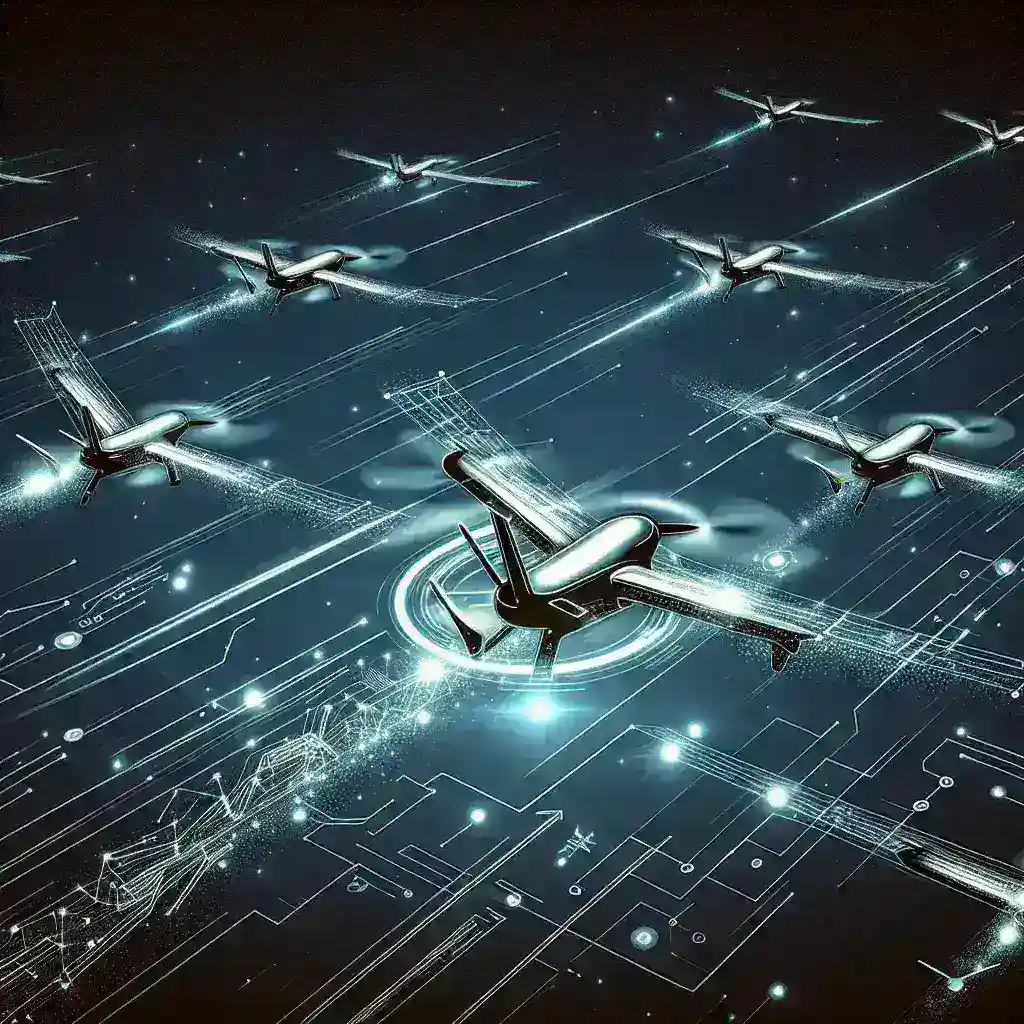US Air Force Expands Drone Swarms with Autonomous Mid-Air Refueling Capability
Introduction
The US Air Force has long been at the forefront of military aviation technology, and its recent efforts to expand drone swarms with autonomous mid-air refueling capabilities represent a significant leap forward in aerial warfare strategy. This innovation not only enhances the operational range of unmanned aerial vehicles (UAVs) but also redefines the dynamics of modern combat, making it a pivotal development in military aviation.
The Evolution of Drone Swarms
Drone swarms, or groups of multiple drones operating in unison, have been a subject of military interest for years. The concept is rooted in the idea that numerous smaller, coordinated UAVs can achieve mission objectives more effectively than single, larger aircraft. The US Air Force has been investing heavily in swarm technology, aiming to create formations that can carry out complex tasks and adapt to battlefield changes in real time.
Key Historical Milestones
- In the early 2000s, UAVs began to gain traction in reconnaissance and surveillance roles.
- By the late 2010s, advances in AI and machine learning allowed for more sophisticated autonomous capabilities.
- In 2020, the Air Force’s Grey Wolf project further pushed the boundaries of drone swarm technology.
Mid-Air Refueling: A Game Changer
The introduction of autonomous mid-air refueling capabilities for drone swarms could be a game-changer for the US Air Force. Traditionally, refueling has been a complex operation involving manned aircraft and precise coordination. However, with the advent of autonomous systems, this process can be streamlined and made more efficient.
Advantages of Autonomous Mid-Air Refueling
- Extended Range: Drones can fly longer distances without needing to return to base, allowing for extended surveillance and strike missions.
- Increased Flexibility: Commanders can deploy UAVs into more diverse environments and scenarios without concerns over fuel reserves.
- Reduced Risk: By minimizing the number of manned aircraft needed for refueling missions, the risk to human pilots is significantly lowered.
Technological Innovations Supporting This Shift
The integration of autonomous mid-air refueling capabilities is made possible by several technological advancements:
1. Autonomous Navigation Systems
Modern drones are equipped with advanced navigation systems that enable them to fly autonomously, navigate complex airspaces, and perform precision movements necessary for refueling.
2. Artificial Intelligence
AI plays a crucial role in coordinating the movements of drones within swarms, allowing them to adapt to changing circumstances in real-time. This technology is essential for ensuring that refueling operations can be carried out smoothly, even in challenging environments.
3. Advanced Fuel Transfer Technologies
New technologies in fuel transfer systems enable drones to connect and refuel autonomously, ensuring that the process is seamless and efficient.
Future Predictions
As the US Air Force continues to invest in drone swarm technology and autonomous mid-air refueling capabilities, several predictions can be made:
- The effectiveness of drone swarms in combat is likely to increase, leading to a reevaluation of tactics and strategies by adversaries.
- Global military powers may accelerate their own drone development programs to keep pace with the US, sparking a new arms race in UAV technology.
- There may be a push towards more ethical considerations in the use of autonomous drones, as their capabilities expand.
Pros and Cons of Autonomous Drone Swarms
Pros
- Enhanced operational efficiency and mission success rates.
- Reduced reliance on manned aircraft, decreasing risk to pilots.
- Improved data collection and real-time intelligence from swarm formations.
Cons
- Potential for increased automation-related accidents and failures.
- Ethical concerns regarding the use of autonomous systems in warfare.
- The challenge of cybersecurity threats targeting drone networks.
Real-World Applications
As the US Air Force rolls out these technologies, several real-world applications can be anticipated:
- Surveillance Missions: Drones equipped with autonomous refueling capabilities can conduct prolonged surveillance over contested areas, providing critical intelligence without the need for frequent returns to base.
- Strike Operations: Armed drone swarms can be deployed for precision strikes on enemy targets, utilizing their extended range to engage from a distance.
- Humanitarian Assistance: Beyond combat, drone swarms could be used for disaster relief efforts, delivering supplies to hard-to-reach areas.
Conclusion
The expansion of the US Air Force’s drone swarms with autonomous mid-air refueling capabilities marks a transformative era in military aviation. As these technologies continue to evolve, they will not only redefine aerial combat but also challenge existing paradigms of warfare and ethics. The implications of these advancements will be felt far beyond the battlefield, as nations around the world evaluate their own military strategies in response to this technological leap. The future of warfare is undeniably changing, and the US Air Force is at the helm of this revolution.

